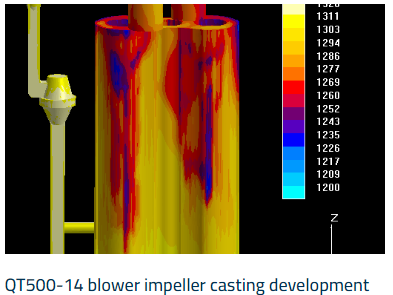Speeding Up Design and Development
The changing capabilities of prototyping have had a profound impact on how quickly the automotive industry can move from concept to production. Previously, creating a new car model required an entire five years, with the help of advanced prototyping technologies - like 3D printing and CNC machining - this timeline has reduced to two years only. In one case, an automotive manufacturer found its development time reduced by 30% when they incorporated rapid prototyping into product development, enabling them to pivot more easily in response to market swings and changing consumer demands.
In Testing and Validation/Cost Efficiency
The implementation of prototyping in the automotive industry has also contributed to a significant decrease in test and validation costs. Previously, the production of multiple full-scale models using traditional methods was expensive. Fast forward to the present day and cost-effective prototyping - creating several iterations of a part at a fraction of the cost. This capacity to test, at minimal cost across a broad spectrum ensures that only the most efficient and market-ready designs are implemented.
Easy customisation and advanced complexity
In automotive production, Prototyping permits higher levels of personalization and advanced designs of vehicles without such additional costs. Some of the designer's express pieces today cannot be made using processed-based manufacturing, but can be made though some modern prototyping tools. Such specialization is mandatory to innovate with things like light weight body panels designed to be aerodynamically optimized and complex interior console structures, both beautiful in appearance and fully functional in vehicles.

Material testing and selection in more detail
Prototyping solutions empower automotive engineers to experiment with tons of different materials and composites on a day by day basis. Such flexibility is crucial to testing materials under a variety of conditions without having to engage in costly and time-consuming full-scale production. E.g. new carbon fiber or aluminum alloy mixes can be prototyped for strength, weight and cost considerations before being selected for large scale production, thus ensuring the optimum performance and cost of the final product.
Environmental Consciousness / Sustainability / Eco-friendly Innovations
Sustainability is a major focus of the automotive industry right now and, prototyping is one way in which it is doing this. Prototyping can help manufacturers pilot innovative designs with respect to fuel efficiency-such as components for electric vehicles or parts built with recycled materials-before they are sent to production. Also, since prototyping often eliminates the need for physical materials and reduces waste, it helps to serve the industry's goal of lowering its environmental footprint.
Driving Competitive Advantage
Conclusion of complete report: prototyping provides autos companies a huge competitive advantage Not only does it accelerate the innovation cycle, but it also offers more freedom in the design and materials that can be used, and actually helps carmakers better cater to their customers with personalized and more advanced vehicles. With the consumer preferences changing as fast as they breathe, it makes sense to optimize this ability to move and innovate quickly. The speed at which new tech and designs can be brought to market can be a complete competitive advantage for those companies who best utilise prototyping.
The automotive industry is one of the sectors receiving a facelift, thanks to the wide-ranging advantages in design flexibility, cost-effectiveness and rapid development, this advanced manufacturing process bring along. With advancements continuing in these and other technologies, the effect on the automotive industry is primed to grow through additional efficiencies and new possibilities in vehicle design and manufacturing.